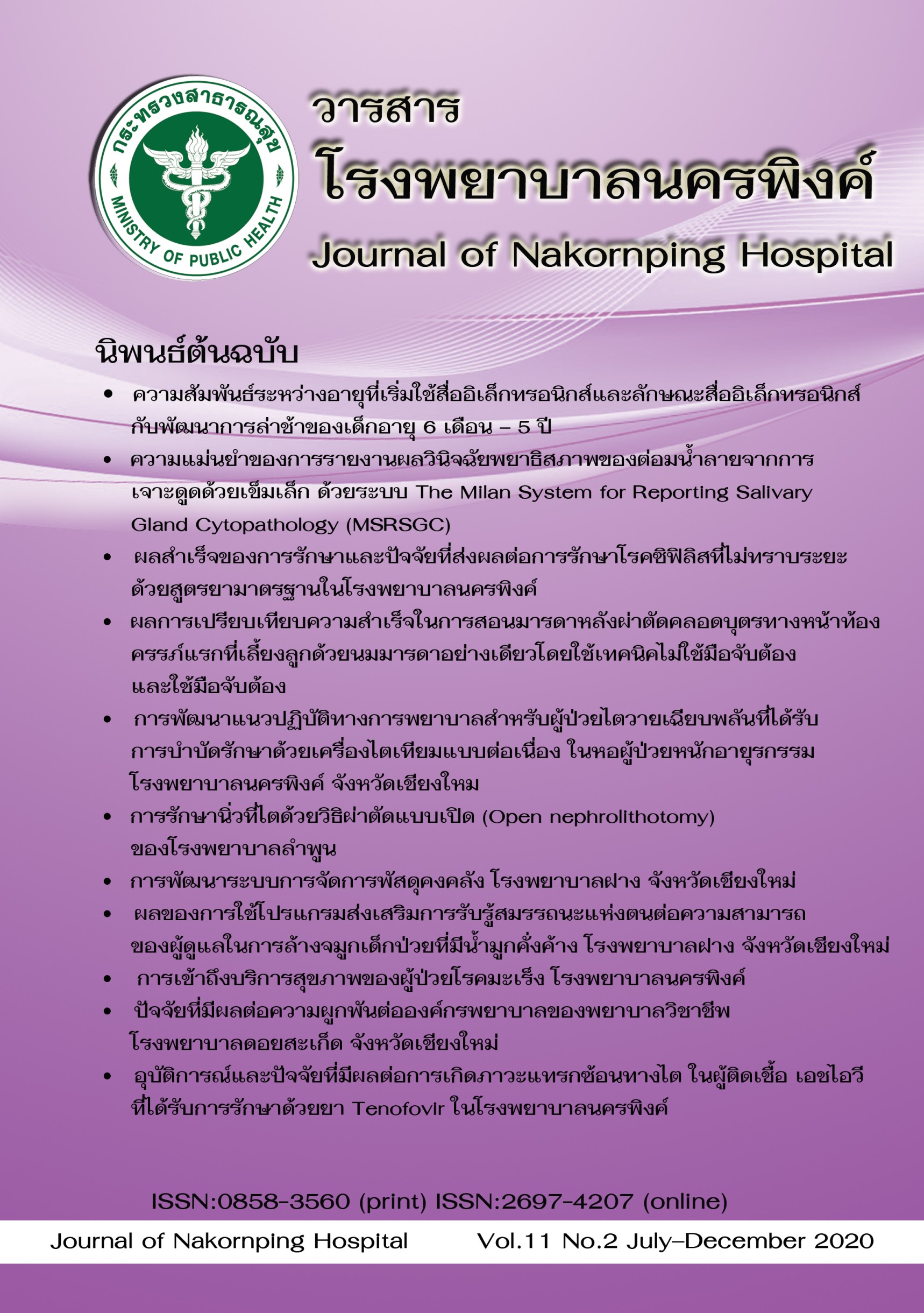Accuracy of The Milan System for Reporting Salivary Gland Cytopathology (MSRSGC) in Fine needle aspiration of salivary gland
Keywords:
fine-needle aspiration, FNA, Milan System for Reporting Salivary Gland Cytopathology, MSRSGCAbstract
BACKGROUND: The Milan system for reporting salivary gland cytopathology (MSRSGC) is a cytology reporting system, published in 2018 by the American Society of cytopathology (ASC) and the International Academy of Cytology (IAC). The purpose is to evaluate sensitivity, specificity and accuracy of FNA interpretation between MSRSGC and conventional descriptive interpretation.
METHODS: Thirty-five cases from 74 cases presented with salivary mass had been performed FNA and surgical pathology diagnosis. The FNA microscopic slides of these 35 selected cases were reviewed and re-categorized into MSRSGC by three pathologists. MSRSGC was compared to conventional descriptive interpretation and surgical pathology diagnosis.
REESULT: From selected 35 cases, 23 cases (65.7%) were female, mean age was 50.6 years (SD 17.6). Eighty-five percent had mass which was greater than 2 cm in diameter. The accuracy, sensitivity and specificity of MSRGC were 91.43% (95% CI, 76.94-98.20), 90.3% (95%CI 74.2-98.0) and 100.0% (95%CI 39.8-100) respectively while the accuracy, sensitivity and specificity of conventional descriptive interpretation were 80.0% (95%CI 63.06 – 91.56), 80.6% (95%CI 62.5 – 92.5) and 75.0% (95%CI 19.4 – 99.4), respectively.
CONCLUSIONS: The MSRSGC is a useful method that can be used in reporting and categorizing cases preoperatively. Having a better understanding of the indeterminate diagnoses will help further refine risk classification criteria.
References
Viswanathan K, Sung S, Scognamiglio T, Yang GC, Siddiqui MT, Rao RA. The role of the Milan system for reporting salivary gland cytopathology: a 5 year institutional experience. Cancer Cytopathol. 2018;126(8):541-551.
Del Signore AG, Megwalu UC. The rising incidence of major salivary gland cancer in the United States. Ear Nose Throat J. 2017;96(3):E13-E16.
Batsakis JG, Regezi JA. The pathology of head and neck tumors: salivary glands, part 1. Head Neck Surg. 1978;1(1):59-68.
Jayaram G, Dashini M. Evaluation of fine needle aspiration cytology of salivary glands: an analysis of 141 cases. Malays J Pathol. 2001;23(2):93-100.
Mukunyadzi P. Review of fine-needle aspiration cytology of salivary gland neoplasms, with emphasis on differential diagnosis. Am J Clin Pathol. 2002;118 Suppl:S100-15.
Schindler S, Nayar R, Dutra J, Bedrossian CW. Diagnostic challenges in aspiration cytology of the salivary glands. Semin Diagn Pathol. 2001;18(2):124-46.
Ivanová S, Slobodníková J, Janská E, Jozefáková J. Fine needle aspiration biopsy in a diagnostic workup algorithm of salivary gland tumors. Neoplasma. 2003;50(2):144-147.
Faquin WC, Rossi ED, Baloch Z, Barkan GA, Foschini MP, Kurtycz DFI, et al. The Milan System for Reporting Salivary Gland Cytopathology. Switzerland: Springer nature; 2018.
Kala C, Kala S, Khan L. The Milan System for Reporting Salivary Gland Cytopathology: An experience with the implication for risk of malignancy. J Cytol. 2019;36(3):160–164.
Kumari M, Sharma A, Singh M, Rawal G. Milan System for Reporting of Salivary Gland Cytopathology: To Recognize Accuracy of Fine Needle Aspiration and Risk of Malignancy- A 4 Years Institutional Study. IJRR. 2020;7(2): 201-207.
Downloads
Published
How to Cite
Issue
Section
License
The articles that had been published in the journal is copyright of Journal of Nakornping hospital, Chiang Mai.
Contents and comments in the articles in Journal of Nakornping hospital are at owner’s responsibilities that editor team may not totally agree with.



